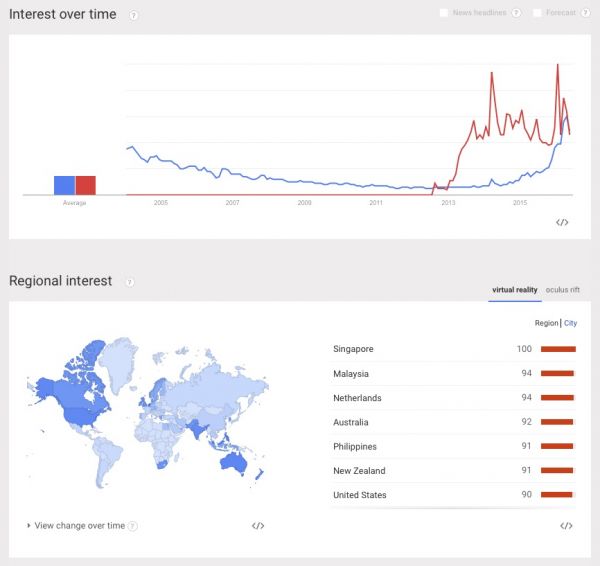While Display Week is just ending and Infocomm coming up soon, there is no shortage on news about new displays and gadgets per se. To break away a little from the ‘news about new stuff’ cycle I was looking at the announcements about AR and VR. There are plenty of those going around every day, as these topics are on the mind of each analyst it seems (and Augmented World Expo was on in Santa Clara, which will have driven interest – Man. Ed. We’ll have a report for subscribers to Mobile Display Monitor, next week). Mostly they report on what great things the respective technology can do.

With the release of the Oculus Rift and Samsung VR, the momentum has definitely shifted towards VR. We hear a lot of announcements regarding other hardware solutions as well as applications that will revolutionize the way we live in the not so far future. As I scan that news on a daily basis, I was kind of convinced that the AR/ VR revolution has already started. However, talking to my family members that are not display aficionados, I realized that most normal people have no clue what this hype is all about.
To look a little deeper into this aspect of consumer interest, I turned towards the trusted Google Trends website, where you can see how often people have been searching for specific terms over the years. The website allows you to enter any term and shows you in a graph how often the specific term has been entered. You can also compare the search volume of terms by entering more than one term.
“Augmented Reality” Search Frequency on Google
In the first graph I am comparing the search volume for the terms ‘augmented reality’ and ‘Google Glass’. As no surprise, the search for Google Glass outranks the search for augmented reality by far. A little bit of surprise was where these searches are coming from. Europe and Asia beat North America, which didn’t make it into the top seven. Based on shading you can get an idea who has the most interest in this specific term, the darker the data, the higher the interest.
A similar comparison of ‘virtual reality’ and ‘Oculus Rift’ produced the following chart.
 “Virtual Reality” Search Frequency* on Google
“Virtual Reality” Search Frequency* on Google
As one can see, the interest in the device is typically higher than for the underlying technology itself. As an interesting observation, we can see that the number of searches for virtual reality is rising sharply in 2016, something that never happened with augmented reality, even during its biggest hype cycle. Maybe there is something to the virtual reality revolution after all?
Looking at the global distribution, you can see that the interest for virtual reality is not so different from the search interest in augmented reality. In this case, the USA at least made it into the top seven, while the top places still go to European and Asian countries. In both cases China does not really show up strongly, however India does.
When we look at these charts we have to ask what this really means in terms of consumer interest. All the data are relative and show how search frequency compares between one term and another. However if we add a search term about something really successful in the CE market, this would give us a better idea of the market potential of AR and VR.
 AR/VR Versus Tablet
AR/VR Versus Tablet
This is exactly what the third chart shows. Nobody debates the commercial impact and success of the tablet. And just in case you wonder, the spikes line pretty much up with each December. Well, we know that the tablet is a typical holiday purchase item from the sales reports and the search frequency for the term ‘tablet’ confirms that there maybe a correlation between search frequency and commercial impact.
It also shows that augmented reality as well as virtual reality need to up their game by some orders of magnitude to catch up to the ‘tablet’. Based on these data, one would best describe the AR and VR revolution today as ‘Much ado about nothing’ as Shakespeare put it many centuries ago. And that was even without having Google around. – Norbert Hildebrand

